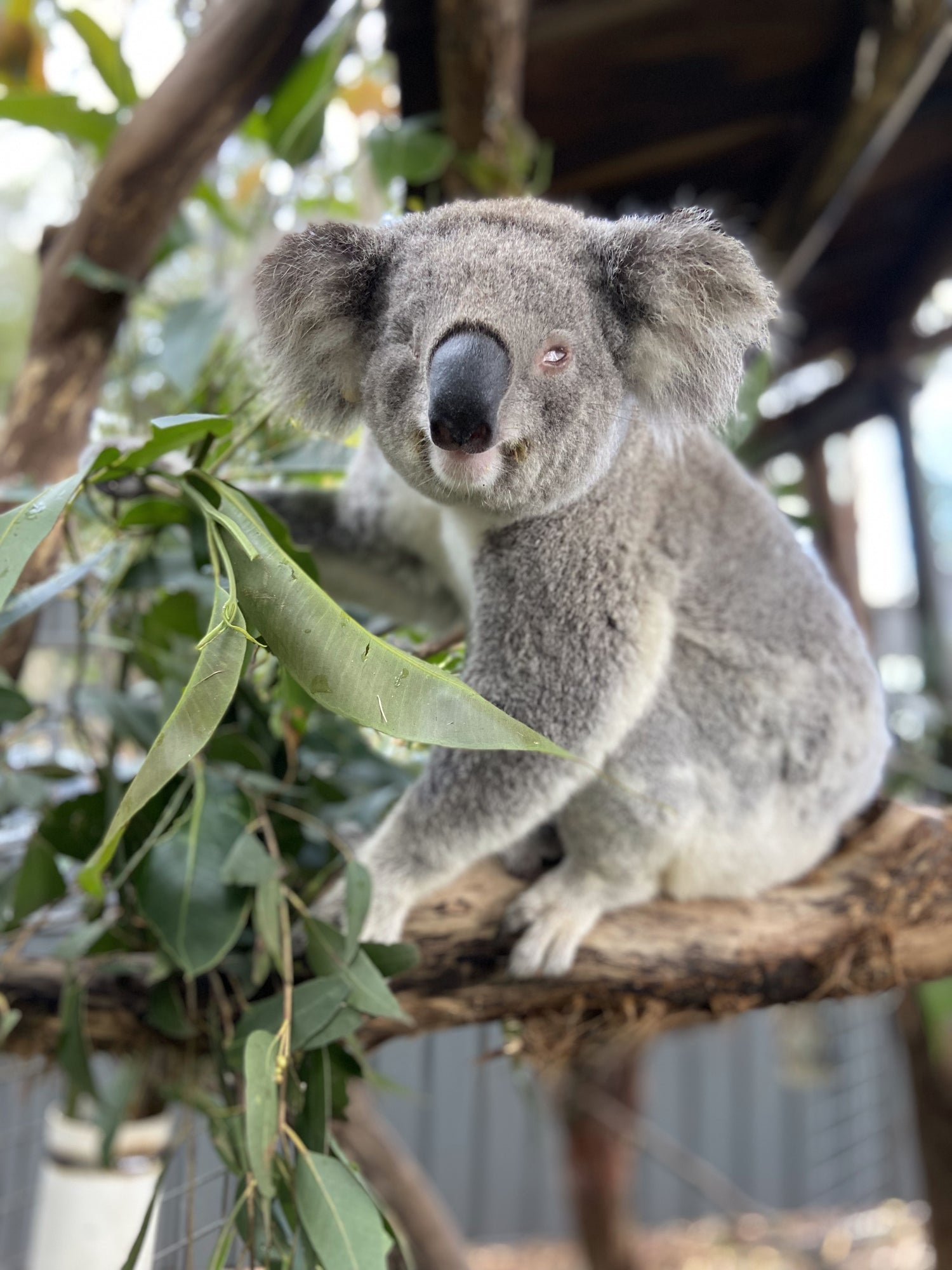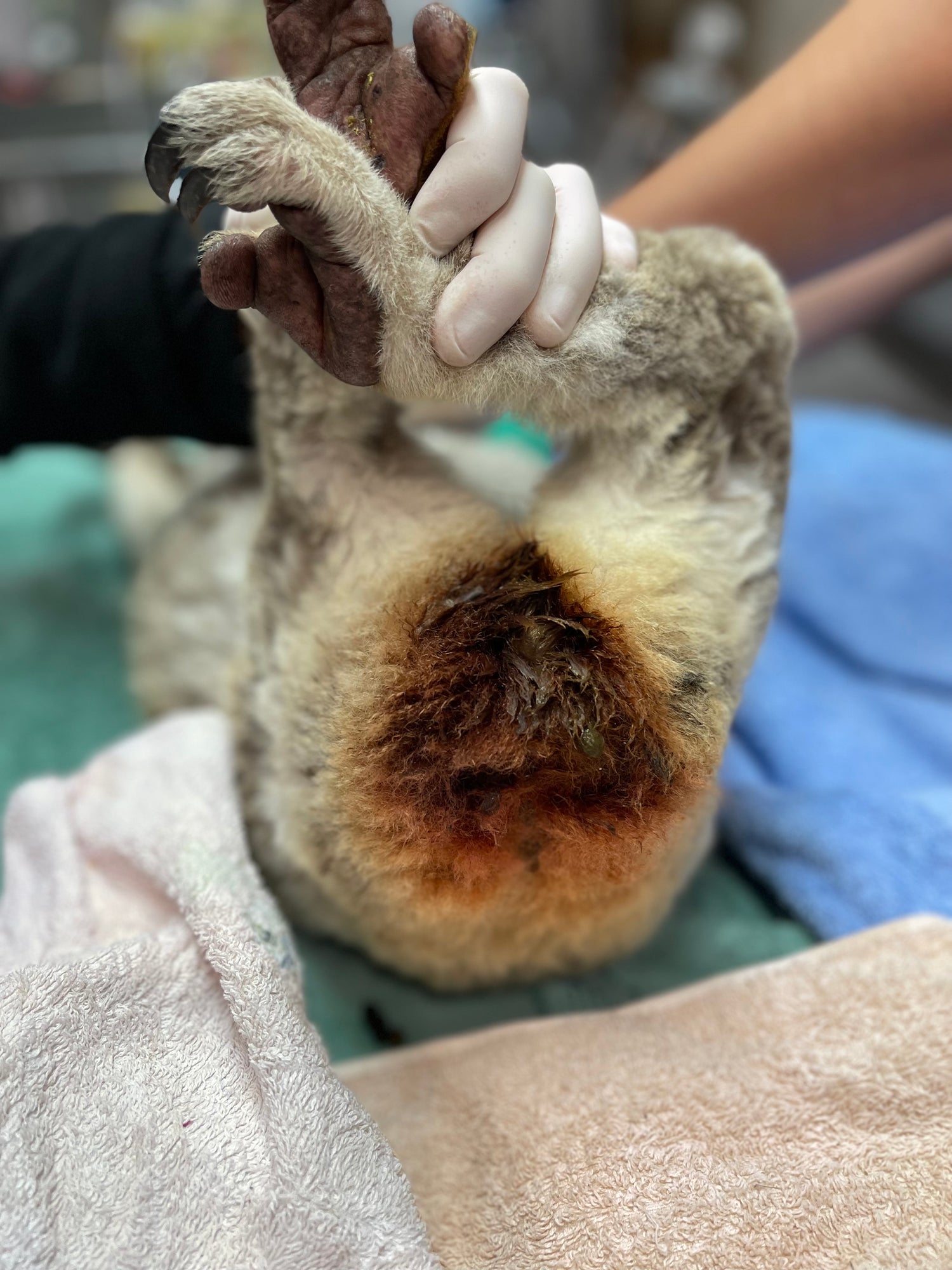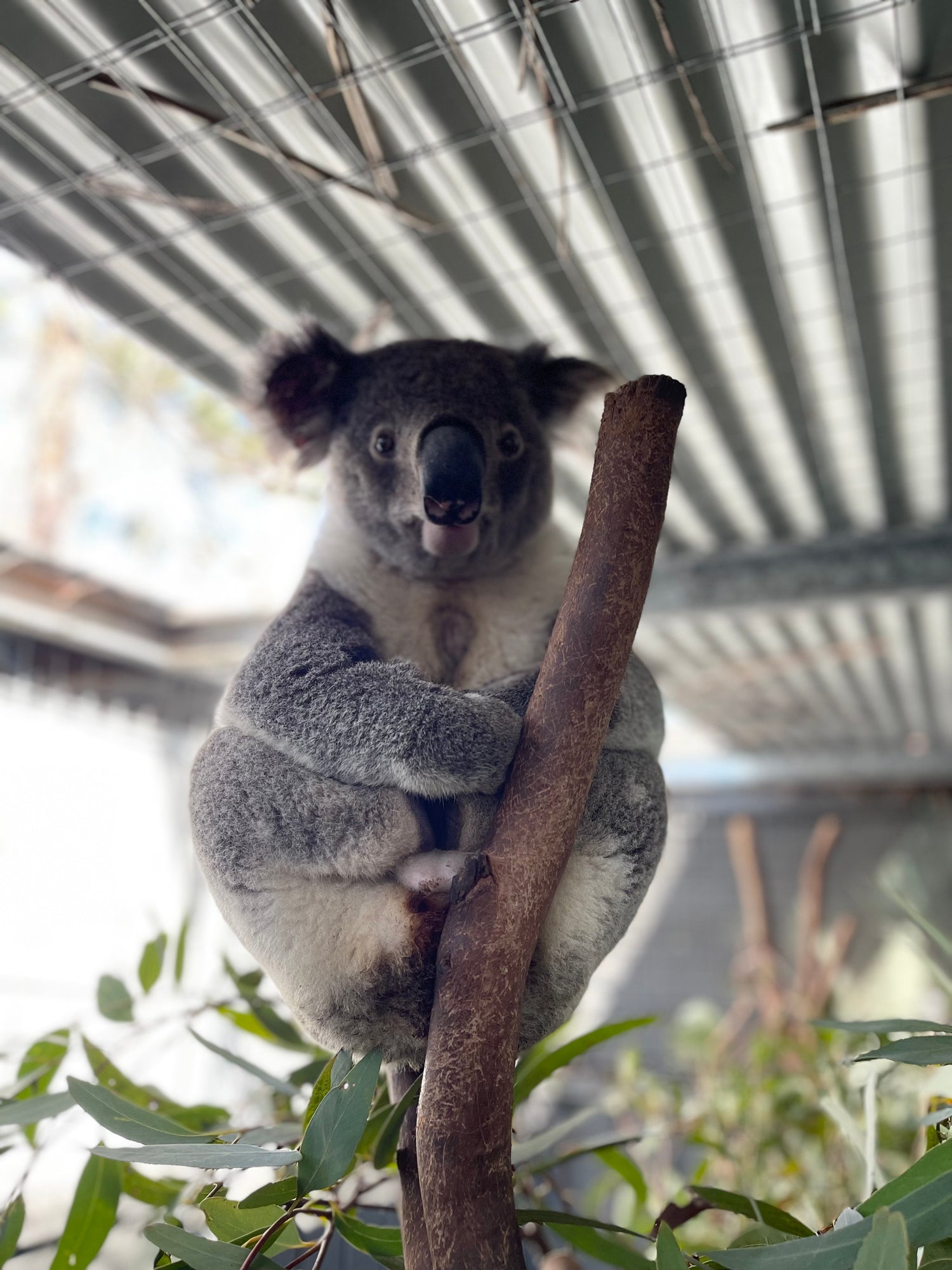Disease
Chlamydia is a major disease threat to our Koala population. It is an obligate, intracellular bacteria that is found in many species of bird and mammals worldwide. Unfortunately, Koalas suffer from both bacterium species Chlamydia pneumonia and Chlamydia pecorum.

How does Chlamydia occur in Koalas?
It is likely that many strains of this disease have existed for a very long time within the koala population, acting as natural population regulators. In the early 1800s Europeans settling in Australia brought with them agricultural livestock such as sheep, cattle and pigs. Records from this period reported koalas “curled up at the base of trees, with diseased eyes and looking very sick”. Research using DNA sequencing has shown that some of the current strains of chlamydia are very similar to those found in cattle, sheep and pigs. It is highly likely that these strains of chlamydia “jumped ship” from agricultural animals into koalas – how this transmission occurred is still largely unknown. These “newer” strains are considered to be more virulent exposing koalas to diseases they have not had enough evolutionary time to adapt to and thus the disease had a major impact on wild koala populations even as far back as the 1800s.

What does it look like in Koalas?
Chlamydia can exhibit as ocular disease (infecting the eyes) or the urogenital form (infecting the reproductive tract and the urinary tract) or koalas can exhibit both at the same time. Some koalas can appear quite healthy with no clinical signs of the disease but can still carry the pathogen (sub-clinical) and may never become unwell during their lifetime.In the ocular (eye) form of this disease the conjunctiva of the eye is normally the first point of noticeable infection. It becomes red and inflamed, the tissue begins to swell and a purulent (pus filled) discharge can often commence. As the disease progresses, it can invade the cornea (the front of the eye itself) and/or the conjunctival tissue creates an inflammatory response where the tissue becomes so swollen and prolific it completely covers the eye and the koala is unable to see. In advanced stages the koala is rendered blind and they usually starve to death as they are unable to locate trees.In an urogenital chlamydia infected koala the wall of the bladder can become so thickened and fibrotic that it becomes ineffective in both holding and expelling urine – the koala becomes incontinent and continually drips urine hence the term “wet bottom” to describe a sick koala. The internal wall of the bladder can also become so inflamed and swollen, the koala continually passes blood and purulent material. This sort of damage is simply not treatable with drugs and is both incredibly painful for the koala and distressing for the human carer to witness.

Interestingly, a much higher expression of this disease occurs in areas of disturbed habitats such as peri urban (beside) and urban environments.
This is also the case in mining areas with reduced vegetation, in areas of high bushfire impact and now in areas suffering from hotter, drier conditions. This higher expression of disease in these areas makes sense as koalas are either forced closer together to compete for resources or further apart and struggle to find food and shelter. Genetic inbreeding occurs in areas of fragmented habitat and areas of poor soil quality. In good healthy forested areas that are undisturbed, the incidence of chlamydial disease is very low.
It is worth noting here that both the NSW and Qld koala populations are struggling to survive far more than the Victorian and South Australian populations.
If the koala is admitted to care in the early stages of ocular infection, there is usually an excellent chance of successful treatment.
-
How we help
When koalas are first admitted into the hospital, they undergo a full health screen examination. This is done under anaesthesia with the koala given a full physical assessment, blood tests are done and a PCR swab (Polymerase chain reaction which detects chlamydia cells) and finally an ultrasound to check the urogenital tract and other internal organs that may be affected by this disease.
Urinary and reproductive tract infection is a much more complex scenario. Whilst the disease chlamydia does not favour either sex and will happily infect both male and female koalas alike, the female koala has “more plumbing” to deal with and therefore more complications can arise. Every time a koala becomes sick, more structural damage is done internally, no matter how well they may appear. Some koalas become infected for the first time and become so diseased, they deteriorate and die in a matter of weeks. Much of how koalas respond to this disease is driven by genetics, soil quality and soil moisture/nutritional status of trees, multiple pressures from disturbance of habitats, climatic conditions and how virulent the actual strain of the disease is in the area they live.
If during this assessment the internal structural damage is so advanced, that the future quality of life for the koala is very poor then the kindest thing to do from an animal welfare perspective is to euthanase the koala whilst it is under anaesthesia. At the Koala Hospital (and across the country) relieving animals of severe pain is a major component of what we do.
-
What does treatment involve?
As a specialist folivore, koalas have evolved to cope with the toxic compounds found in eucalypt leaf by a number of mechanisms. Koalas have what is dubbed a “super liver” which is designed to break down and metabolise these toxins and eliminate them from the body. The koala also has a large gut system plus a two-metre caecum filled with a suite of micro-organisms (microbiome) all designed to break down the leaf allowing uptake of nutrients.
This makes treatment difficult as antibiotics that are capable of killing the chlamydia in koalas also have the potential to kill off the important microbiome and as a result can kill the koala. There is a fine line between successful treatment and causing harm to the koala.
Other medications such as non-steroidal anti-inflammatory drugs are metabolised and eliminated by the “super liver” before they are able to do the job they are designed to do.
If the koala does not have disease that is too far advanced to be treated, then the koala will commence a 4-6 week treatment plan. At the end of the treatment plan, the koala is held for a further two weeks and “left alone”, then the koala is given a full health screen under anaesthesia again and if everything has been deemed “successful”, the koala is eartagged, microchipped and released back to its capture point.
As the prevalence and severity of the disease is deeply related to Koala habitat, prevention is just as important as treatment. There needs to be far better management strategies and tighter more robust legislation put in place by both the Federal and State governments to ensure their protection well into the future. There needs to be large amounts of quality undisturbed forested environments free of humans set aside where koalas can live undisturbed to breed and remain healthy.
Here's how you can help!
There are ways for you to help us slow the impact of these threats. Here are three of the biggest, most significant ways you can help us today!
-
Adopt
ADOPTChoose one of our koalas to adopt. and receive a specialised adoption package. Adoption is a meaningful and symbolic way to contribute to the conservation of koalas as you learn about your adopted koala and the species as a whole. Learn about our available adoptees to find who you connect with here!
-
Donate
DONATEMake a donation to help fund conservation efforts for wild koalas and their habitats, provide care to sick and injured koalas and support research and education efforts. Every donation amount makes an impact, no matter the size, and you can choose from many different donation funds, depending on what appeals to you most.
-
Visit
VISITCome see us in action to find out what we’re all about! Drop into the Koala Hospital during our opening hours to get a first-hand look at our facility, including our Koalaseum, care clinic, and shop. You can learn about our rescue and rehabilitation efforts and check out our facility.